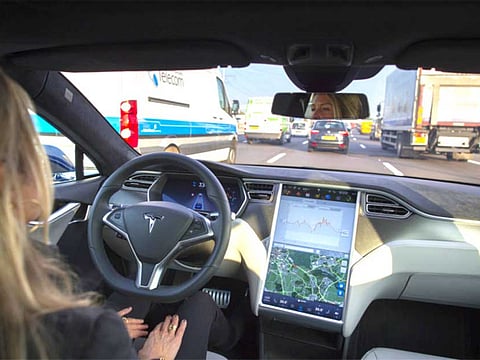There’s a better answer than electric cars
Regulators ought to concentrate on other technologies rather than on forcing vehicle electrification

Erich Sixt, chairman and chief executive officer of the Pullach, Germany-based global car rental company that bears his family’s name, recently described electric cars as a “costly political error” — given their still inferior range, long charging times and the huge investment necessary to expand the charging infrastructure.
It may have been a self-serving statement (renters don’t like them).
But he may also well be right: If a paper published correctly estimates the cost of extracting carbon dioxide (CO2) from the air, regulators could do better to concentrate on that technology rather than on forcing vehicle electrification.
Carbon Engineering is a company cofounded by Harvard physicist David Keith and funded, among others, by Microsoft founder Bill Gates.
Since 2015, the firm has been running a CO2 extraction plant in Canada, testing out a technology that was until recently rejected as too costly.
CO2 extraction
Keith and his collaborators, who wrote the paper, have used an independent cost assessment to calculate that using the process they developed allows the capture of a metric tonne of carbon dioxide at the cost of $94 (Dh345.73) to $232 — depending on variable costs such as the price of natural gas. (Since energy is used in the process, about 0.9 tonnes of CO2 is actually removed from the atmosphere with each ton captured).
That is far lower than previous estimates for the technology, ranging from $550 to $1,300 per tonne.
The paper’s authors explain that the reduction comes from simply using industrial equipment already available on the market without much customisation, a strategy they put in place at the Canadian plant.
At Keith’s prices, investing in CO2 capture can be a better idea both for consumers and for the environment than car electrification.
According to the International Energy Agency (IEA), increasing the number of electric cars on the road from the current two million to 280 million by 2040 will displace only 1 per cent of the expected global CO2 emissions.
This is largely because other demand for carbon-based energy, including from planes and ships, will push emissions up — and because electricity to power the giant electric vehicle fleet won’t come entirely from clean sources.
EV investment
To achieve this unimpressive result, carmakers have already pledged some $90 billion in EV investment, and that’s not counting the cost of the ubiquitous infrastructure necessary to give EVs mass appeal, the investment needed to expand power generation and network capacity and the government subsidies to electric car buyers.
Since late last year, Carbon Engineering’s plant has been producing fuel from the CO2 it extracts by combining it with hydrogen.
The fuel is compatible with current internal combustion engines, so there’s no need for carmakers to invest in completely different technology. Since burning the synthetic fuel can only release as much CO2 as was used in its production, the whole cycle is pretty much carbon-neutral.
Keith calculates that at scale, his technology can produce fuel at $3.79 per gallon ($1 a litre) — significantly higher than the current wholesale prices. There’s no question that going over from fossil fuel to the synthetic liquids would need to be subsidised by environmentally-friendly governments, but such subsidies have a distinct advantage over incentives for EV owners and investment in parallel infrastructure: Nothing will need to change for the enormous existing fleet of cars, about 1 billion of them.
Existing gas stations will be able to handle the new liquids just as they do fossil fuel, too. And the new fuels could be used for those modes of transportation that aren’t even close to being electrified, such as ships.
Obviously, producing enough synthetic fuel to reduce emissions significantly will require lots of extraction capacity.
According to the paper, building a plant capable of capturing 980,000 tonnes of CO2 a year requires some $1.1 billion of capital investment, which could be brought down to $780 million if construction begins at scale.
To cut the CO2 emissions predicted by the IEA for 2040 by 1 per cent, or by 357 million tonnes, would require $284 billion at Keith’s estimated prices.
That number, however, is comparable with the total investment necessary to go over to electric cars.
Besides, there are other carbon capture technologies that can be deployed directly at industrial facilities that use fossil fuels; developing them at scale could lower the required investment.
None of this is to say electric cars shouldn’t be developed or sold. There are plenty of true believers who will buy them, probably enough to support some production and investment.
There’s no pressing need for regulators to rush into embracing the imperfect technology behind today’s EVs and pushing it on manufacturers and consumers.
Other technology exists that could use the regulatory attention and at least some of the government funds going into EV promotion.
Promoting its development won’t necessarily pay off, but it could well lead to better, less traumatic outcomes for an important established industry and for a billion (and counting) people who use its products.
— Bloomberg
Leonid Bershidsky is a Bloomberg Opinion columnist covering European politics and business.
Sign up for the Daily Briefing
Get the latest news and updates straight to your inbox



